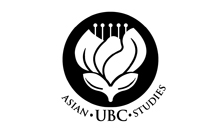Saturday, July 7, 2012, 10:30am – 11:45am
“Pilgrimage to Two Local Temples in Kyushu”
Sherry Fowler (University of Kansas). By the sixteenth century many temples in Japan with a central icon of Kannon (Avalokiteśvara) were organized into different thirty-three stop pilgrimage routes covering thousands of kilometers. Over the centuries because of the success of the old Kannon pilgrimage routes, small temples with Kannon icons continued to organize into local routes, offering ever more possibilities to increase merit. This paper will consider the history and present circumstances of two small temples, named Shinguji and Fumonji, on Japan’s southern island of Kyushu that became part of the Sagara regional pilgrimage route for Kannon that was established in the seventeenth century. The two temples, which are open to the public during the spring and fall equinoxes, are of special interest because each has a set of Six Kannon images as the main focus of worship.
“Buddhist-Inspired Artists from Contemporary Japan: Intersections of Tradition, Imagination, and Social Activism”
Patricia J. Graham (University of Kansas). This paper addresses the presence of Buddhist values in contemporary Japanese art, a force that remains largely unnoticed, through the lens of five unrelated artists who work apart from formal Buddhist organizations, in traditional and avant-garde media: Yuriko Yamaguchi (born 1948), Kaminuma Hisako (1952-2012), Mukoyoshi Yuboku (born 1961), Shinji Turner-Yamamoto (born 1965), and Mukaiyama Kisho (born 1968). These artists draw inspirations from Buddhist beliefs about interconnectedness, transience, compassion, and mindfulness. These values are precisely those espoused by individuals associated with a newly-identified form of Buddhism described as “Buddhist Modernism,” and within that context, with Socially Engaged Buddhist movements, whose followers strive to alleviate major problems endemic to modern life including the dire state of the environment, political violence, and the suffering of impoverished and persecuted citizens. I attempt to use the tenets of Engaged Buddhism as a touchstone to explore these artists’ work and also to conceptualize how their identity as Japanese artists endows them with a cultural worldview distinct from that of artists from other Buddhist nations.




